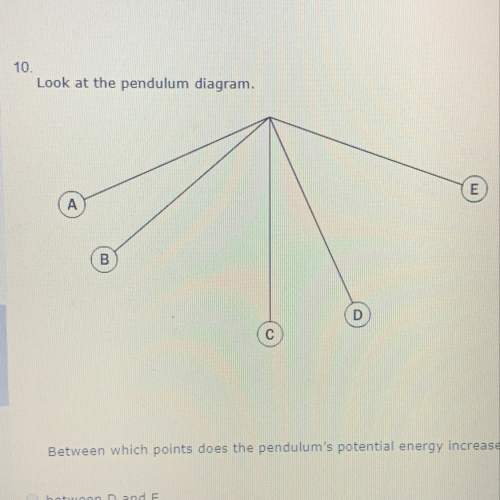
Physics, 14.12.2019 06:31, clarisaguilar0
Ageneticist looks through a microscope to determine the phenotype of a fruit fly. the microscope is set to an overall magnification of 400x with an objective lens that has a focal length of 0.60 cm. the distance between the eyepiece and objective lenses is 16 cm.
1) find the focal length of the eyepiece lens assuming a near point of 25 cm (the closest an object can be and still be seen in focus). do not neglect any values in your calculation. (express your answer to two significant figures.)

Answers: 1
Other questions on the subject: Physics

Physics, 22.06.2019 02:30, jendun123ovrxij
The particle in a two-dimensional well is a useful model for the motion of electrons around the indole ring (3), the conjugated cycle found in the side chain of tryptophan. we may regard indole as a rectangle with sides of length 280 pm and 450 pm, with 10 electrons in the conjugated p system. as in case study 9.1, we assume that in the ground state of the molecule each quantized level is occupied by two electrons. (a) calculate the energy of an electron in the highest occupied level. (b) calculate the frequency of radiation that can induce a transition between the highest occupied and lowest unoccupied levels. 9.27 electrons around the porphine ring (4), the conjugated macrocycle that forms the structural basis of the heme group and the chlorophylls. we may treat the group as a circular ring of radius 440 pm, with 20 electrons in the conjugated system moving along the perimeter of the ring. as in exercise 9.26, assume that in the ground state of the molecule quantized each level is occupied by two electrons. (a) calculate the energy and angular momentum of an electron in the highest occupied level. (b) calculate the frequency of radiation that can induce a transition between the highest occupied and lowest unoccupied levels.
Answers: 1

Physics, 22.06.2019 04:40, joneil1952
Argon is adiabatically compressed from an initial volume of 16 liters to a final volume of 2 liters. by what factor do the following quantities change? do they increase or decrease? (a) the rms speed (b) the thermal energy of the gas (c) the molar specific heat cv (d) the pressure
Answers: 3

Physics, 22.06.2019 08:30, lisxramirez
Hey student studies gravity using objects that have the same mass which two objects have the greatest gravitational force acting between them a. 100kg 1.0m 100kg b. 100kg 2.0m 100kg c. 100kg 2.0m 100kg big d. 100kg big 3.0m 100kg big
Answers: 1

Physics, 22.06.2019 19:00, maddied2443
Matter that emits no light at any wavelength is called
Answers: 2
Do you know the correct answer?
Ageneticist looks through a microscope to determine the phenotype of a fruit fly. the microscope is...
Questions in other subjects:



Social Studies, 24.08.2019 09:20

Mathematics, 24.08.2019 09:20



Mathematics, 24.08.2019 09:20


Mathematics, 24.08.2019 09:20

Computers and Technology, 24.08.2019 09:20


 = 1.7 cm
= 1.7 cm





